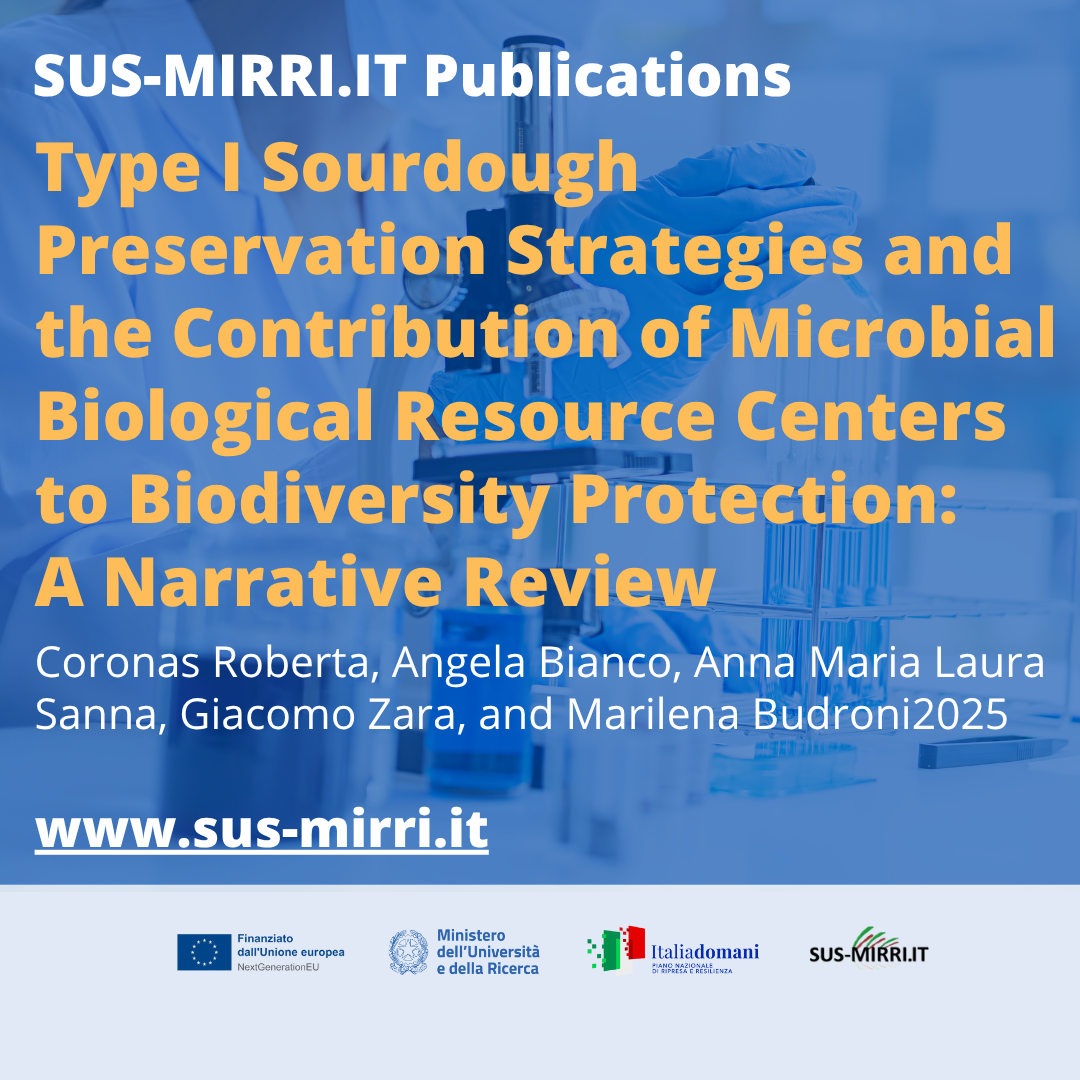Coronas, Roberta, Angela Bianco, Anna Maria Laura Sanna, Giacomo Zara, and Marilena Budroni. 2025 “Type I Sourdough Preservation Strategies and the Contribution of Microbial Biological Resource Centers to Biodiversity Protection: A Narrative Review” Foods 14, no. 15: 2624. https://doi.org/10.3390/foods14152624
Abstract
Traditional type I sourdoughs are being rediscovered and increasingly used in artisanal and industrial bakeries due to the unique taste and texture, potential health benefits, and longer shelf life they confer on to baked products. These unique properties are attributed to the diverse microbial communities of sourdough, comprising both yeasts and bacteria. The traditional preservation method for type I sourdough (i.e., continuous backslopping) may lead, over time, to taxonomic and functional rearrangements of its microbial communities. Consequently, significant deviations in the characteristics of baked products can occur. In this context, this review aims to summarize the recent literature on the long-term preservation and maintenance strategies for type I sourdough and highlight the essential role that microbial biological resource centers (mBRCs) could play in the preservation and sharing of sourdough microbiomes. Specifically, the identification of appropriate preservation methods, implementation of well-defined access and benefit-sharing protocols, and development of microbiome-specific datasets, should be encouraged within the context of mBRCs. These infrastructures are expected to play a pivotal role in preserving the microbiota of fermented foods, serving as a crucial element for innovation and the safeguarding of traditional foods and culinary heritage.
Read more at: https://www.mdpi.com/2304-8158/14/15/2624



